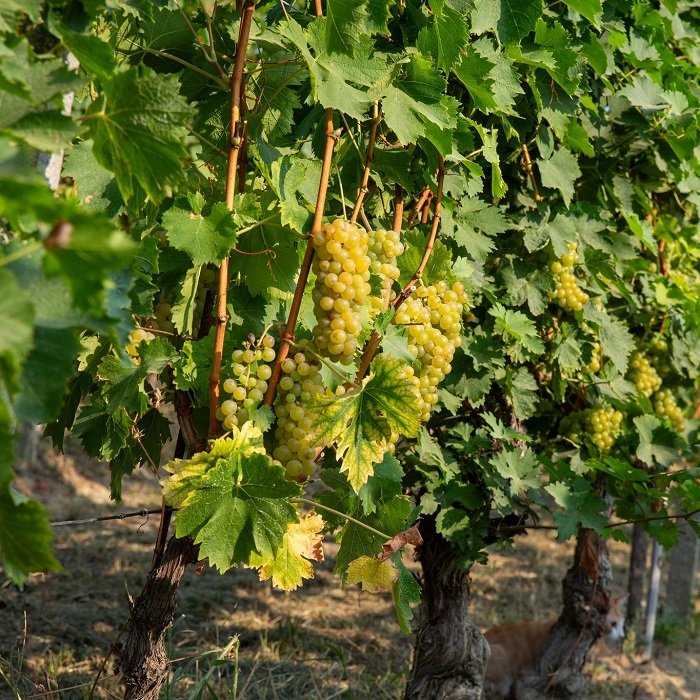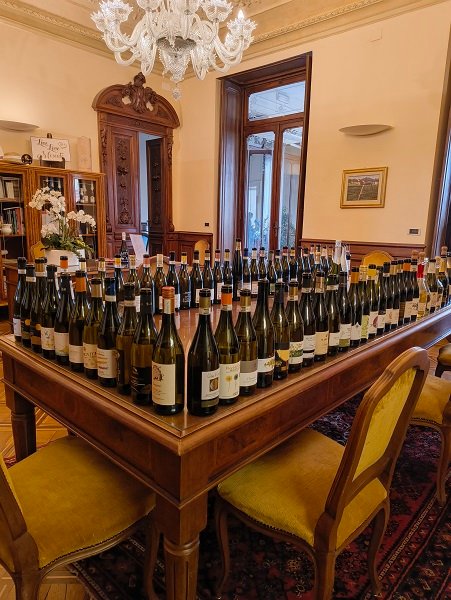Moscato bianco, either in the “mushroom cap” sparkling version known as Asti or the “flush cap” sparkling version known as Moscato d’Asti is an extraordinary wine, an all-Italian treasure worth rediscovering. The best fragrant bubbles of Asti here they are.
Contributed by Stefania Vinciguerra – Christmas time and time for many traditional sweets although by now there are so many revisions and sometimes incomprehensible (especially in prices). In all this there is a strongly Italian product that we tend to underestimate: Moscato d’Asti in its spumante Asti Docg or tappo raso (mainly varies the internal pressure of the bubbles) versions.

Yet it is a ingenious, territorial product (we also have sub-areas) and has fascinating characteristics. Low alcohol content, slightly sweet, fragrant with notes of tangerine, citrus, white flowers and notes of winter woods and a bubbly eye-catching that’s festive. It’s also cheap which doesn’t hurt. In short ideal for relaxed drinking on its own or with dried fruit, classic desserts and even succulent oysters as Stefania Vinciguerra well explained in an article published some time ago.. The panorama of Asti has been enriched by a new type born thanks to the ingenious intuition of some producers who are starting to make it with the classic method of fermentation in the bottle with surprising and compelling results.
Our tasting of Asti Docg
Thanks to the collaboration with the Asti Consortium we sampled about ninety samples plus a few others that were sent to the editorial office. Almost all of them are from the 2024 vintage which turned out to be interesting, with high acidities balanced with the right sugar content and very pleasant on the nose without ever being cloying or invasive on the sweetness. By now we are no longer surprised by the remarkable ability to age thanks to many 2023 samples still in top form despite a hotter, drier year. They are Sunnier bodied wines but well supported by the bubbles, and the nose shows hints of candied fruit, lime, cedar and even blood orange. The few samples of metodo classico ranged from 2022 to 2013 and we fell in love with the olfactory and taste complexities they achieve while keeping intact the fragrance of the varietal and the agility of the drink but with amazing finishes.
To learn about the Asti Docg designation.
Before moving on to the best wines tasted (not to be missed) a few numbers about the appellation.
The production territory spans the Langhe, Roero and Monferrato, lands rich in unmistakable hills, a World Heritage Site, and encompasses 51 municipalities in the provinces of Asti, Alessandria and Cuneo. There are 9,800 hectares under vine, involving about 4,000 producers including wine growers, winemakers, cooperative wineries, and sparkling wine houses.
The types, as we said, are two: Asti Spumante and Moscato d’Asti, for a total of about 100 million bottles, sold almost totally (90 percent) abroad. Of Asti there is both a sweet version and Asti Secco, which in our opinion, however, does not find its way and its true raison d’être.
Next is a list of our best tastings divided by type. These are all wines that have achieved or exceeded 90/100 in tasting.
Asti
- Ca’ de Lion, Asti Metodo Classico 1871 2020
- Gancia, Asti Metodo Classico Cuvée Gancia 24 months 2013
- Marcalberto, Asti Metodo Classico 2021
- Beppe Marino, Asti Sorì Valentino
- Banfi, Asti Rosa Regale
2024 Moscato d’Asti
- Ca’ de Lion (Ghione since 1871), Canelli 2024
- Banfi, Moscato d’Asti Sciandor 2024
- Arione, Moscato d’Asti 2024
- Cascina Carlot, Moscato d’Asti Fiori di Campo 2024
- La Gironda, Moscato d’Asti 2024
2023 Moscato d’Asti
- Ca’ d Gal, Moscato d’Asti Sant’Ilario 2023
- Dogliotti, Moscato d’Asti La Galeisa 2023
- Arione, Moscato d’Asti Contessa di Castiglione Vigna San Giorgio 2023
- Cascina Carlot, Moscato d’Asti Fiori di Campo 2023
- Manfredi, Moscato d’Asti 2023
Other vintages Moscato d’Asti
- Alice Bel Colle, Moscato d’Asti Strevi Paie 2022
- Marenco, Moscato d’Asti Scrapona 2020
- Ca’ d Gal, Moscato d’Asti Vigna Vecchia 2019









